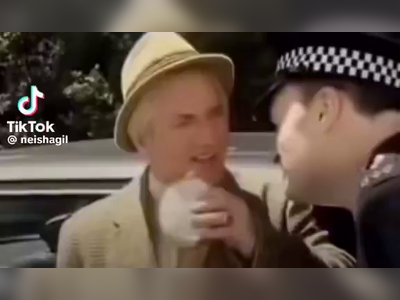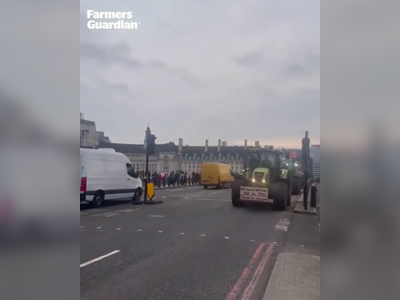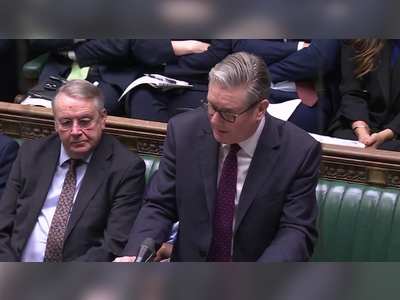
Regulations and Safety Guidelines for Election Posters in Dublin
Dublin City Council issues rules and safety tips for election poster placement to ensure public safety and environmental care.
Election season has begun and with it comes posters as far as the eye can see on light poles, barriers, and fences.
Although it is entirely legal for candidates to erect posters at election time, there are some rules and regulations surrounding them.
This is to ensure the safety and wellbeing of the general public, as well as the environment.
Most importantly, all posters must be removed within seven days of the election.
Since the election is on November 29, that means all posters must come down by midnight on Friday, December 6.
Not only do the posters have to come down - the cable ties have to as well.
Any posters found to be in place more than a week after the election are in breach of the provisions of the Litter Pollution Act and will result in the issuing of a fine of €150 per individual poster.
The council said: "In February 2023, Dublin City Council adopted a revised Posters Protocol for the erection of Temporary Posters/Notices on Dublin City Council property to advertise Public Meetings/Events.
This Protocol prohibits the erection of posters on O’Connell Street, Grafton Street and Henry Street.
In elections/referenda since that date, the political parties/candidates voluntarily agreed not to erect posters on those streets, and we are now formally requesting that a similar voluntary arrangement be put in place for the upcoming Elections." SAFETY Kevin Kelly, Head of Policy, Partnerships and External Affairs with Vision Ireland, said: "It is unacceptable that some election candidates are continuing to create these hazards for people who are blind or vision impaired.
The law is very clear that these posters must be placed a minimum of 2.3 metres (7.5 ft) from the ground.
Yet, year on year, we see that this is ignored by candidates and they continue to put people at risk.
By adhering to the law and placing election posters above the specified height, candidates can convey a genuine sense of responsibility and understanding to people who are blind or vision impaired.
This is a matter of public safety and should be taken seriously." ACCORDING TO DUBLIN CITY COUNCIL, THERE ARE A NUMBER OF SAFETY ISSUES, INCLUDING: Posters that are obscuring the visibility of traffic/pedestrian signals and traffic signs.
Many of the problems are caused by posters that are erected on poles adjacent to signals or signs.
Posters that are below head height or resting on the ground.
These posters can cause obstructions on footpaths and are particularly hazardous to the visually impaired.
Protruding cable ties that are at a level that could cause injury to pedestrians, particularly children.
Guidelines for posters include: Posters should be erected at a minimum height of 2.3 metres above footpaths, cycle tracks or any area to which pedestrians have access.
Posters should not be erected on lamp standards with overhead line electricity feed, traffic signal poles, bridge parapets, overpasses, pedestrian bridges, or roadside traffic barriers.
Posters should not obscure statutory road signs or traffic/pedestrian signals in any way.
Posters should be securely fixed to poles with cable ties or similar material to facilitate removal without damage to the poles.
Local authorities will remove any posters that are deemed a safety hazard.
Although it is entirely legal for candidates to erect posters at election time, there are some rules and regulations surrounding them.
This is to ensure the safety and wellbeing of the general public, as well as the environment.
Most importantly, all posters must be removed within seven days of the election.
Since the election is on November 29, that means all posters must come down by midnight on Friday, December 6.
Not only do the posters have to come down - the cable ties have to as well.
Any posters found to be in place more than a week after the election are in breach of the provisions of the Litter Pollution Act and will result in the issuing of a fine of €150 per individual poster.
The council said: "In February 2023, Dublin City Council adopted a revised Posters Protocol for the erection of Temporary Posters/Notices on Dublin City Council property to advertise Public Meetings/Events.
This Protocol prohibits the erection of posters on O’Connell Street, Grafton Street and Henry Street.
In elections/referenda since that date, the political parties/candidates voluntarily agreed not to erect posters on those streets, and we are now formally requesting that a similar voluntary arrangement be put in place for the upcoming Elections." SAFETY Kevin Kelly, Head of Policy, Partnerships and External Affairs with Vision Ireland, said: "It is unacceptable that some election candidates are continuing to create these hazards for people who are blind or vision impaired.
The law is very clear that these posters must be placed a minimum of 2.3 metres (7.5 ft) from the ground.
Yet, year on year, we see that this is ignored by candidates and they continue to put people at risk.
By adhering to the law and placing election posters above the specified height, candidates can convey a genuine sense of responsibility and understanding to people who are blind or vision impaired.
This is a matter of public safety and should be taken seriously." ACCORDING TO DUBLIN CITY COUNCIL, THERE ARE A NUMBER OF SAFETY ISSUES, INCLUDING: Posters that are obscuring the visibility of traffic/pedestrian signals and traffic signs.
Many of the problems are caused by posters that are erected on poles adjacent to signals or signs.
Posters that are below head height or resting on the ground.
These posters can cause obstructions on footpaths and are particularly hazardous to the visually impaired.
Protruding cable ties that are at a level that could cause injury to pedestrians, particularly children.
Guidelines for posters include: Posters should be erected at a minimum height of 2.3 metres above footpaths, cycle tracks or any area to which pedestrians have access.
Posters should not be erected on lamp standards with overhead line electricity feed, traffic signal poles, bridge parapets, overpasses, pedestrian bridges, or roadside traffic barriers.
Posters should not obscure statutory road signs or traffic/pedestrian signals in any way.
Posters should be securely fixed to poles with cable ties or similar material to facilitate removal without damage to the poles.
Local authorities will remove any posters that are deemed a safety hazard.











